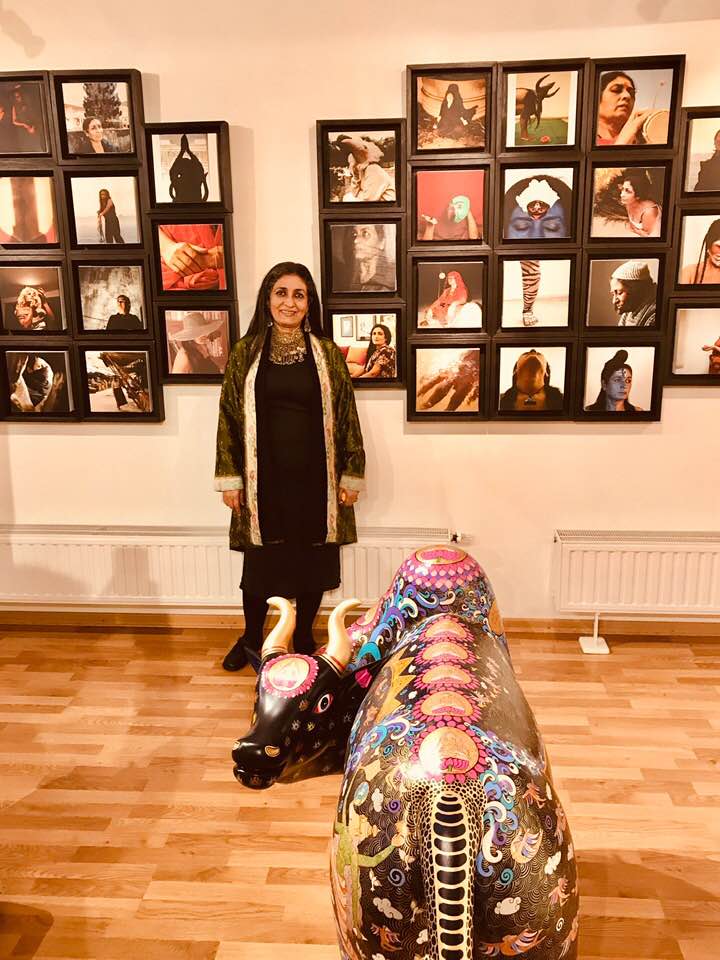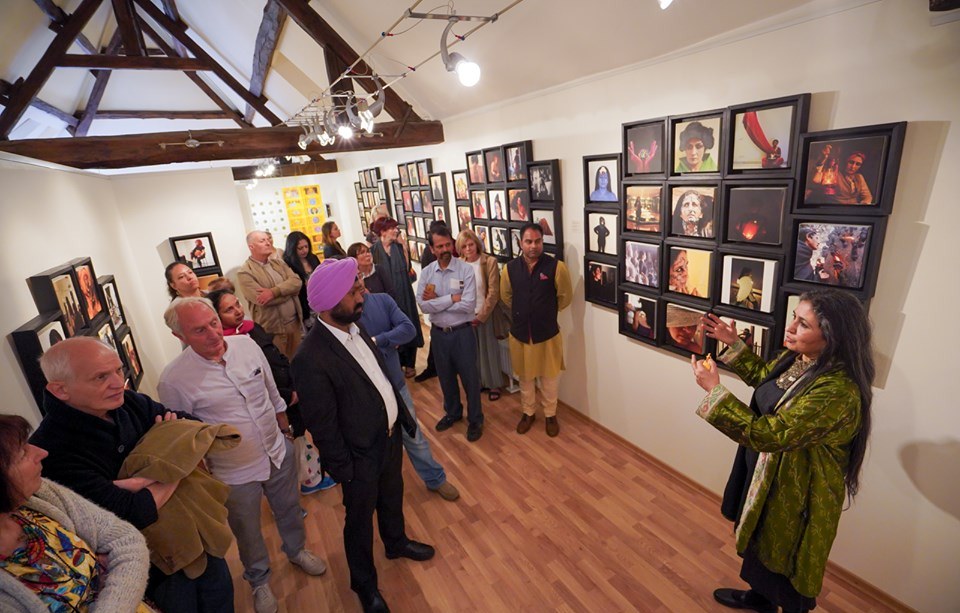India’s celebrated artist Seema Kohli has recently taken her ‘Celestial Revelations’ to Belgium. The solo exhibition is currently on view at the Museum of Sacred Arts (MOSA), Durbuy. A multidisciplinary artist, Seema explores the myriad themes of femininity, beauty, and spirituality through her diverse set of works. The opening ceremony of the exhibition was marked by graceful performances of Harisaprasad Chaurasiya, flute maestro, and Gaura Nataraja, a brilliantly talented bharatnatyam dancer from Latvia.
A celebration of female form and her energy, explored and captured in a contemplative mode, is well reflected in this vast and varied collection of about two hundred works of art in the exhibition. The show is curated by Sushma Bahl and founder of MOSA Martin Gurvich. The substantial solo show incorporates some new art in varied media created by her especially for MOSA. This includes Parvati within a composition of Ardhanarishwar as a manifestation of Shakti. Also ‘Saptmatrika’, ‘Astlakshmi’, ‘Navdurga’, ‘Dasmahavidya’, and ‘Chausath Yogini’, all of them revered women divinities, as part of the eclectic repertoire that celebrates female form and energy. “The body of works showcased at the museum encompasses my complete practice through various mediums and methods, ranging from sculpture in fibreglass & bronze, video, performance, paperworks, to, of course, paintings,” Kohli shared.
The focus for much of Seema Kohli’s artistic practice has been Hiranyagarbha – the ancient notion of universe floating in waters amidst dark empty and non-existence realm, as the ‘golden womb’ – the all pervasive source of life. Inspired by philosophies and myths, the work retains its umbilical cord with divine dimensions as the central axis. The aesthetics of her art engage with beauty, vitality and sensuality within the concept of creation, decay and renewal in the cycle of life. Another fascinating feature of her work is encompassing the sacred and the profane in a dynamic interactive mode, and not as opposing poles, as the creatives seek to search for the divine within. The remarkable exhibition embodies the ancient, mediaeval, modern, contemporary, urban and folk, as the different streams merge and cohabit in the soulful creations.

According to arts advisor and curator Sushma K. Bahl, “A fine blend of natural elements, anthromorphic forms and divine figures, often winged and flying, appear in Seema Kohli’s seminal artworks. There are mermaids and nymphs, women and men, gods and goddesses, birds and animals, trees and flowers, lotus and fish, the sun and the moon, mandala and other metaphors, along with meandering rivers and mighty mountains featured in the celestial revelations exposition. Various hybrid forms, part human part animal, encompassing the origin and proliferation of life add to the enticing appeal of the work.”
“The multihued visuals incorporate swarming canvases, dense drawings, fine etchings, meticulously sculpted forms, enchanting installations, performative photographs and cinematic videos. The diligently drawn celestial embodiments, reveal and conceal as the creatives on display, in diverse mediums delve into the realm of Hiranyagarbha. Within the broad premise of Hiranyagarbha together with feminine energy, her visuals also explore themes of decay and transformation. In a dialogue of matter and memory, Kaal (time) and Maya (illusion), continuity and temporality, vulnerability and awareness, personal and public, the concept of Shakti, the divine feminine and cosmic energy, replays in diverse manifestations. A sense of harmony across faiths and coming together of yin and yang in tandem, evokes beauty and subliminally in her art,” she added.
The range of materials and methods in Seema Kohli’s art-scape include prints, drawings on paper in pen and charcoal, paintings in watercolours and mixed media on canvas. Her sculptures and installations including cows and other forms, appear in bronze, fibre, steel and wood. She also works in photography, serigraphy and etchings besides live and performance videos. The exhibition will be on display at the Museum of Sacred Art (MOSA), Belgium till 15 December 2019.

